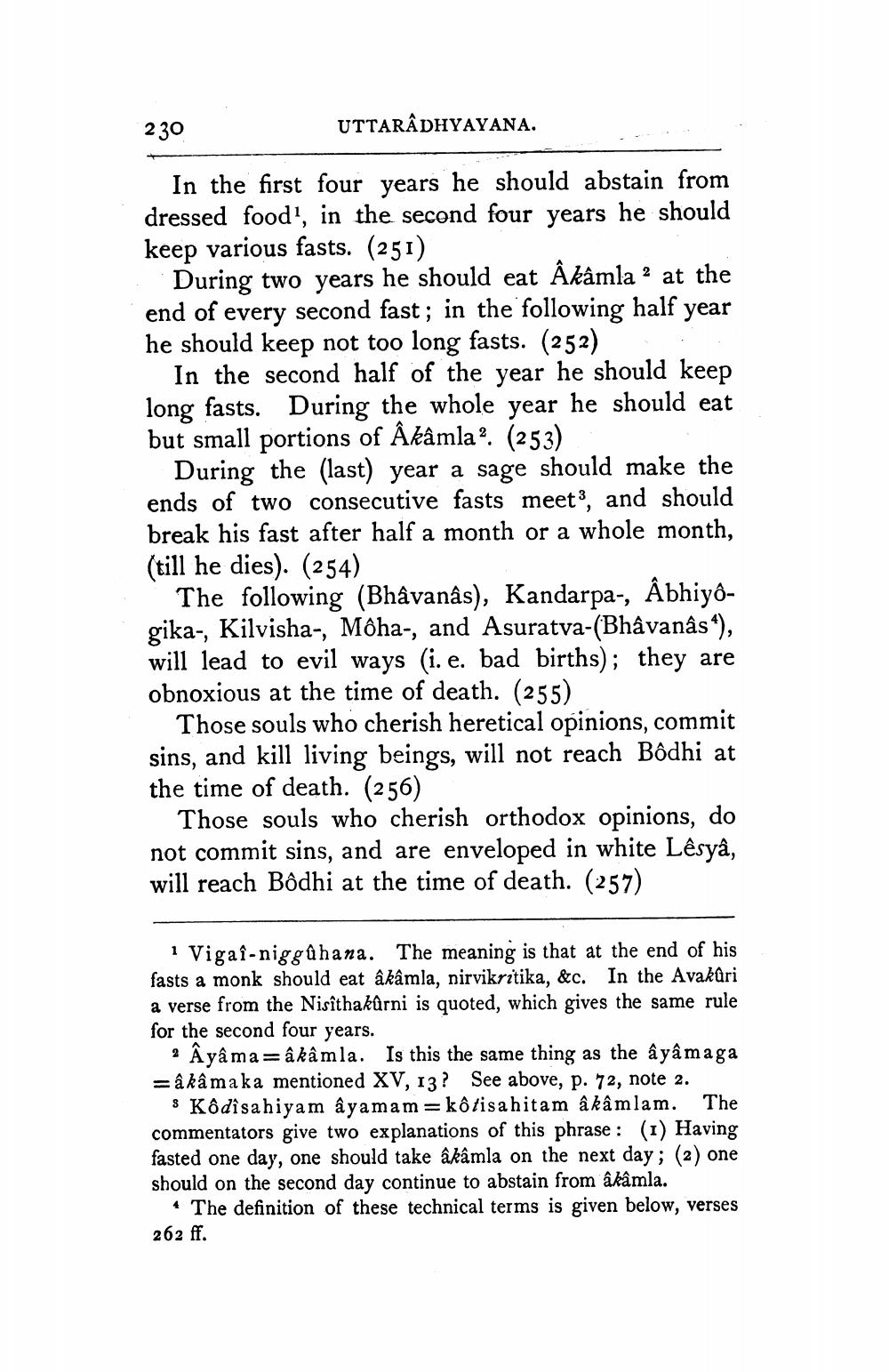________________
230
UTTARADHYAYANA.
In the first four years he should abstain from dressed food", in the second four years he should keep various fasts. (251)
During two years he should eat Âkâmla 2 at the end of every second fast; in the following half year he should keep not too long fasts. (252)
In the second half of the year he should keep long fasts. During the whole year he should eat but small portions of Akâmla?. (253)
During the (last) year a sage should make the ends of two consecutive fasts meet}, and should break his fast after half a month or a whole month, (till he dies). (254)
The following (Bhâvanâs), Kandarpa-, Abhiyôgika-, Kilvisha-, Môha-, and Asuratva-(Bhâvanâs“), will lead to evil ways (i.e. bad births); they are obnoxious at the time of death. (255)
Those souls who cherish heretical opinions, commit sins, and kill living beings, will not reach Bôdhi at the time of death. (256)
Those souls who cherish orthodox opinions, do not commit sins, and are enveloped in white Lêsyâ, will reach Bôdhi at the time of death. (257)
1 Vigaî-niggûhana. The meaning is that at the end of his fasts a monk should eat âkâmla, nirvikritika, &c. In the Avakûri a verse from the Nisîthakûrni is quoted, which gives the same rule for the second four years.
? Â yâmarâkâmla. Is this the same thing as the âyâmaga =âkâmaka mentioned XV, 13? See above, p. 72, note 2.
s Kôdîsa hiyam âyamam=kôtisa hitam â kâmlam. The commentators give two explanations of this phrase : (I Having fasted one day, one should take akamla on the next day; (2) one should on the second day continue to abstain from âkâmla.
• The definition of these technical terms is given below, verses 262 ff.




